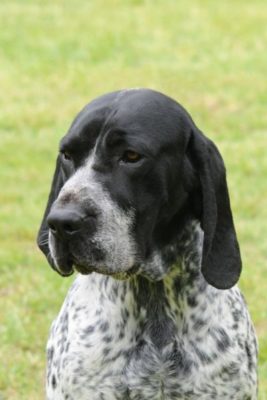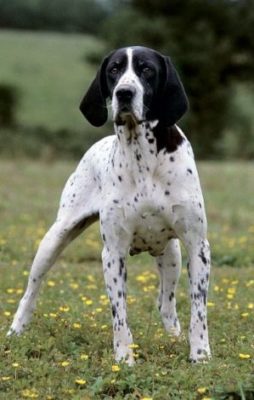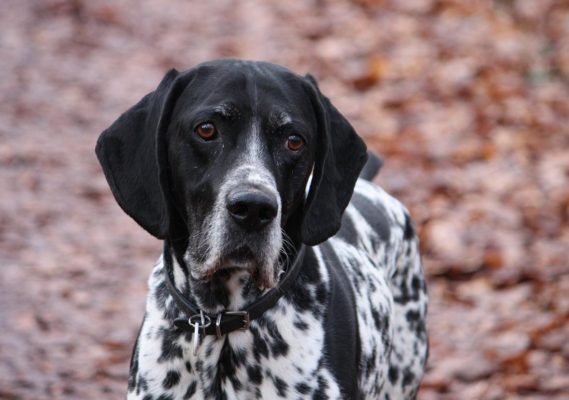Braque d’Auvergne
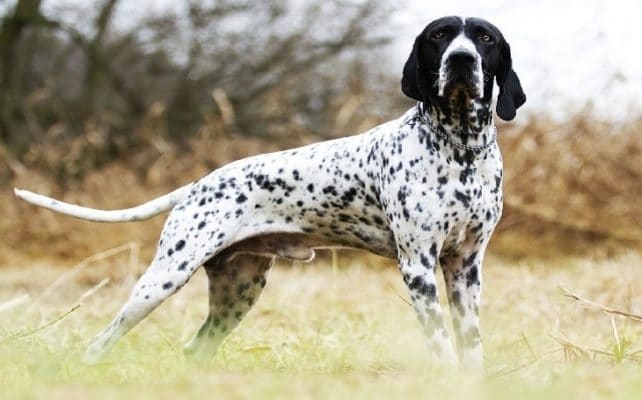
Although the vast majority of dogs of this breed are kept as working dogs, they integrate well into family life. They are exceptionally affectionate dogs who adore children and are very gentle and patient with them. The Braque d’Auvergne is also brilliant and can cleverly adapt their behavior depending on their working or family environment.
Table of Contents
Breed Information
| Another Name | Auvergne Pointer, Bleu d’Auvergne |
| Origin | France |
| Height | Males 57-63 cm Females 53-59 cm |
| Weight | Males 22-28 kg Females 22-26 kg |
| Fur | Short, thick, shiny |
| Color | A mixture of black and white markings, with black spots all over the surface |
| Lifespan | 12-14 years |
| FCI Classification | Pointing Dogs |
| Group | Dogs for protection, dogs for hunting, dogs for children |
| Price | From $400 |
Breed Photos
Origin History
The breed originated in France in the 18th century. The result of a breeding program was a dog with a keen sense of smell and persistence called the Braque d’Auvergne. It was, and still is, a relatively slow hunter expected to work closely with its master.
The Braque d’Auvergne is a versatile dog capable of tracking and hunting games. It can perform the roles of two or three other, more specialized breeds at the same time.
During World War II, most dogs were abandoned or killed by their owners, who had no resources to feed them. According to records kept by the breed’s historians, only about 25 members survived the war, and it was from this tiny gene pool that the modern-day Braque d’Auvergne was reborn. Although the breed remains rare today, it is no longer considered endangered.
Appearance
The Braque d’Auvergne has a strong, but at the same time noble appearance with great symmetry of proportions. He has a straight physique; the back’s length is equal to the length of the front limbs. The upper lips are well developed, overlap the lower jaw, and emphasize the muzzle’s square shape. The nose is black, with large open nostrils, and the eyes are oval-shaped with a dark walnut hue. The ears are set fairly high and well behind the skull.
The neck is relatively long, about equal to the length of the head. The back is strong and straight; the chest is well convex, the firm abdomen is taut, with small hollows on the sides. The tail is set high and held horizontally.
The strong, straight limbs give the gait of the Braque d’Auvergne a light and graceful appearance. Its coat is short and shiny, softer than that of many other hounds. His color is a mixture of black and white markings, with black spots throughout that give the illusion of a blue hue. The ideal height for male and female hounds is 57-63 cm and 53-59 cm, respectively. Both sexes weigh between 22 and 28 kg.
Character
Although the vast majority of dogs of this breed are kept as working dogs, they integrate well into family life. They are exceptionally affectionate dogs who adore children and are very gentle and patient with them. The Braque d’Auvergne is also brilliant and can cleverly adapt their behavior depending on their working or family environment.
He gets along very well with other dogs and is considered happier when living in the company of another dog. His playful demeanor and sociability mean that he cannot serve as a guard dog, although he can raise the alarm if he hears something strange. He is not aggressive and will not try to defend his territory from intruders.
Care
A short coat requires very little maintenance. Brushing once a week will be enough to keep it in good condition. The sturdy nails of the Braque d’Auvergne will need trimming every 6-8 weeks with a clipper, and the ears will need brushing about once every two weeks to prevent wax buildup.
Training
A Braque d’Auvergne will instinctively understand his owner’s desires and respond accordingly. It can be seen in his trainability, his eagerness to please, and his intelligence. Such a pet is a pleasure to work with.
Those who want to put their dog into dog sports should know that while he is a capable hunter in the field, his slow pace will not allow him to excel in competition. However, he is sure to enjoy participating in his owner’s home trials. This working breed is very hardy, so it should be trained as often as possible. It is advisable to keep such a dog, not in a small city apartment but a country house with access to the yard.
Common Diseases
Unfortunately, there is little data on the health of this breed. It is known that the most common concerns of owners are the following diseases:
- aortic stenosis;
- hip dysplasia;
- dislocation of the patella;
- progressive retinal atrophy.
Nutrition
The Braque d’Auvergne has an average risk of obesity. To keep your dog happy and healthy, you need to feed him quality dry food and be active together. You need to find a balance between your dog’s activity and the number of meals he eats. If any weight change is noticed, you should consult your veterinarian, make a nutrition plan, and measure Braque d’Auvergne’s weight regularly.
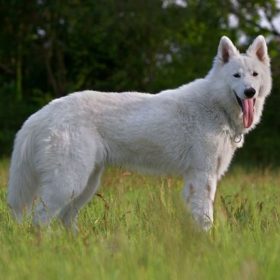 White Swiss Shepherd
White Swiss Shepherd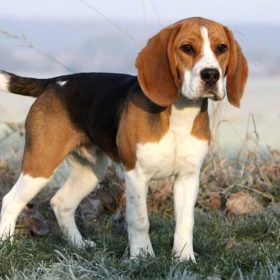 Beagle
Beagle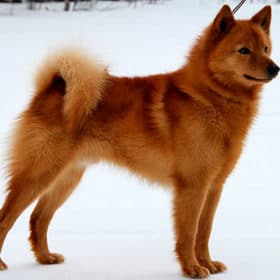 Finnish Spitz
Finnish Spitz Shikoku
Shikoku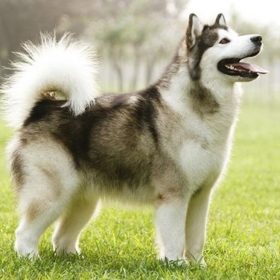 Alaskan Malamute
Alaskan Malamute Curly-coated Retriever
Curly-coated Retriever